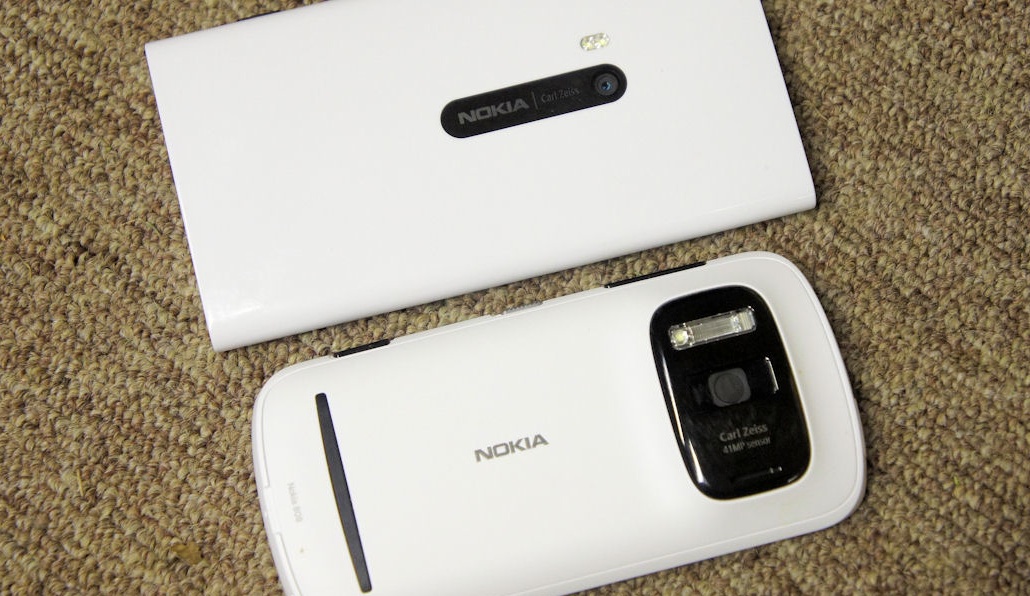[Writer's note: this is an update to an article from late 2012. Almost every paragraph has been edited or added to, plus there are new points.]
Elsewhere on this site, we pore over Windows Phone 8 in detail, in our various reviews - I wanted to concentrate here on some of the sticking points, some of the objections to Windows Phone that I (and others) have raised myself over the last year or so. How many of these are still valid and are there workarounds that err.... work?
In no particular order, then, here are some of our current (and past) complaints about the platform and the devices which run it:
- "WiFi won't stay on!" One of the most common complaints about the Windows Phone platform, Wi-fi insists on turning off a few minutes after the screen goes off, meaning either an 8 second connection delay when you power the screen on again or plenty of ad-hoc cell data use when the screen’s off, all coming out of your tariff. Answer: Solved. Microsoft has now addressed this common complaint with a new option in Settings>Wifi>Advanced, 'Keep WiFi on when screen times out'. This works well to achieve what every other platform seems to handle out of the box, though rather curiously Microsoft still defaults to this being unticked, meaning that new users will be inconvenienced. Hopefully common sense willl prevail and the default will be to keep WiFi on in a future update.
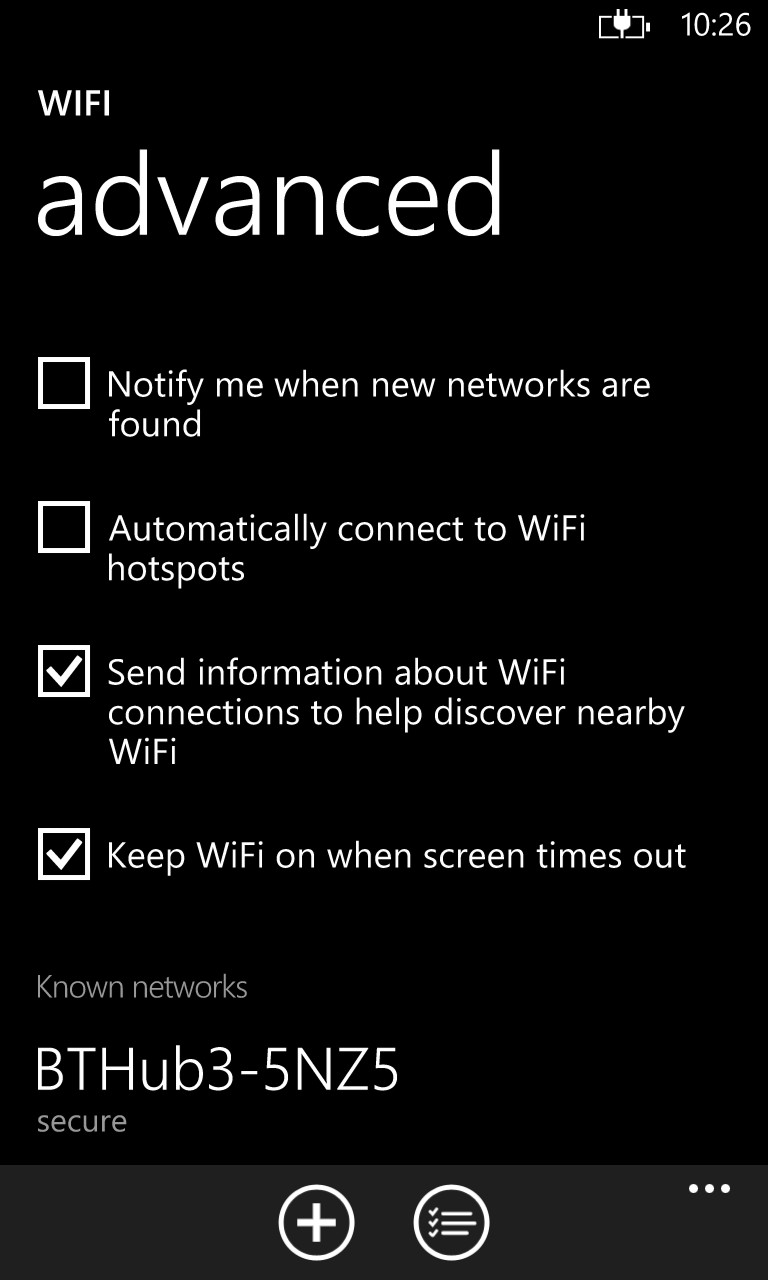
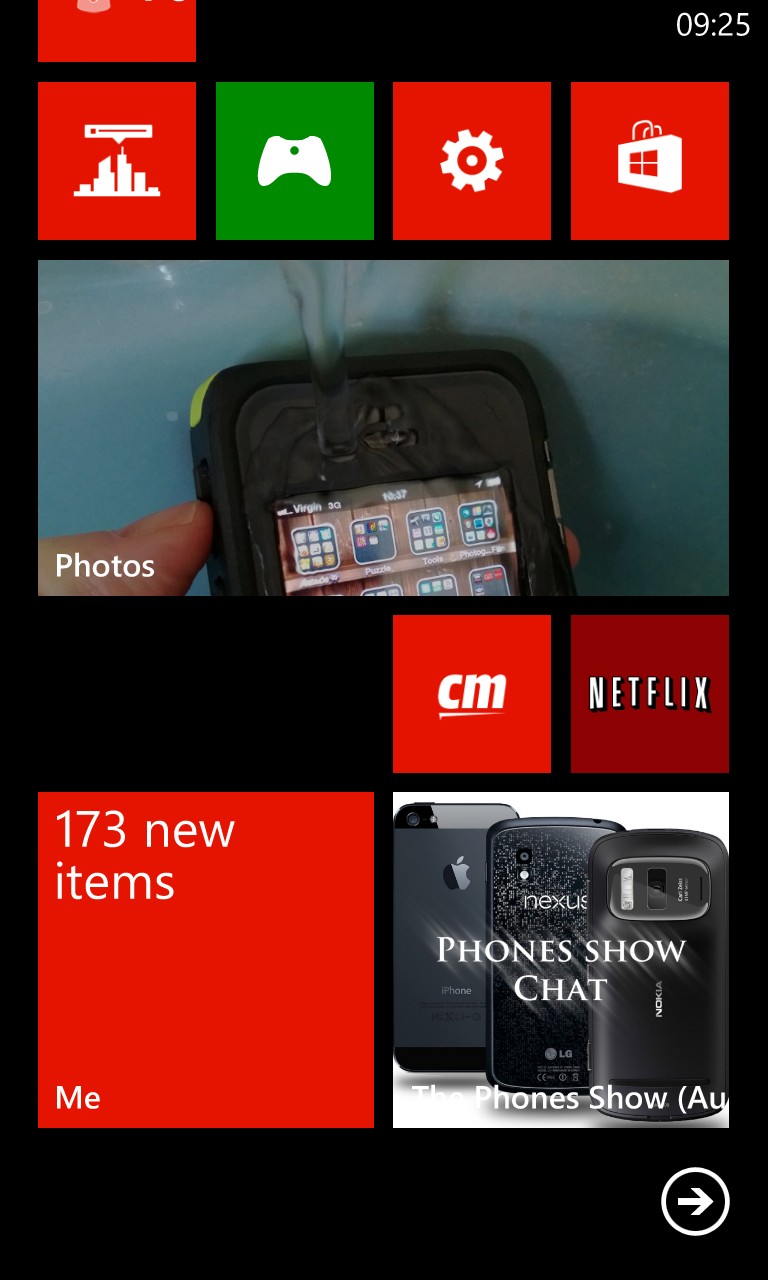
- "There's no decent podcast client". This from Symbian users from years past, since Nokia had a good client built into the OS (though not recently, having to rely on third party apps). Answer: Partially solved. The most popular is probably Podcatcher, which has auto-refresh and auto-download, but does rely on you bringing it back to the foreground in order to fully work with feeds and the interactions with the Windows Phone 8 audio player are often frustrating. However, it's workable, almost fully automated, and playback and downloads can carry on even if you've switched to another app or screen. Also popular is the much-improving Podcast Lounge, of which more in a future article. None of these solutions can hold a candle to podcatching implementations in fully multitasking OS like Symbian, Meego or Android though...
- "It doesn't support wired multimedia headsets". Answer: Solved. Admittedly, the headsets available aren't as all-singing, all-dancing as the old Nokia/Symbian ones, but the likes of the Monster headsets do allow inline volume control (shown below), as well as play/pause/skip functionality. Enough to keep most people happy and it all works most of the time.

- "Bluetooth file sending isn't possible". Answer: Solved. This is now possible with Windows Phone 8. Most content is supported: a contact, a photo, a video, an Office document or a DRM-free music file can all now be sent provided there are no incompatibilities with the receiving device. Sending URLs, notably, doesn't yet work. You also have to have Bluetooth turned on first (it won't do it for you) then you'll see 'share via' 'Bluetooth' shown as an option in the appropriate places.
- "There's no 'always on' clock", as is common on Symbian and Meego devices (shown below). Answer: Unresolved. Maintaining always on pixels relies on both the presence of an AMOLED screen and support within the OS. With more than half the available Windows Phones having IPS or TFT screens, the chances of platform-wide adoption of such a feature seem small. And there's no way a third party can add this functionality because of the multitasking restrictions.
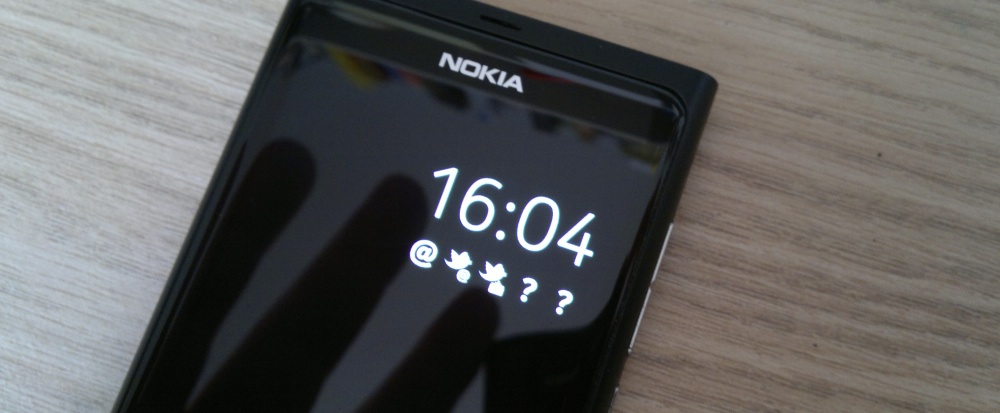
A typical Nokia AMOLED always-on clock display, here modelled on the Meego-powered N9, but also found on many AMOLED-screened Symbian-based phones, including the N8, C7, C6-01, E7, N86 and, of course, the 808 PureView
- "NFC’s just as proprietary as implementations on other platforms" - yes, you can tap to pair with an accessory and tap for information on a tag, and yes, you can send stuff to other Windows Phones, but the 920 can’t even exchange information with other Nokias from other platforms, such as my 808 PureView, running Symbian or my Galaxy Nexus, running Android. Answer: Unresolved. All operating system makers and manufacturers need to pull their fingers out here, I think - a standard is needed such that device A can be tapped with device B to share contact info, a file, a playlist, a photo or video, even if the manufacturers and platforms are different. Until this is the case, NFC sharing will never take off.
- "There's no Google+ client". Answer: Partially solved. Google has publicly said that it's not investing resources in developing for Windows Phone but with Google+ being a social network and needing numbers, I think it might relent for this possible app/client. In the meantime, it's an utter cinch to use (and access directly via a Live Tile 'pin') the excellent touch-friendly mobile web version of Google+, as shown above.
- "You have to connect up to a desktop to update the OS". Answer: Solved. Not anymore, Windows Phone 8 supports completely over the air updates, though the old desktop client method is still there as well.
- "There's no flashlight function built-in", as on all of Nokia's recent Symbian phones. Answer: Solved. True, but then this isn't built into Android devices either, and for both this platform and Windows Phone there are numerous excellent third party utilities (e.g. Flashlight-X) to activate the camera video LED as a torch.
- "Half the applications, plus the Start screen, don’t work in landscape mode". Answer: Unresolved. True, they don't, and they don't to a similar degree in Android, though Microsoft would argue, as would Google, that landscape is implemented for the screens and apps which need it. Which is fair enough, even if it does mean a lot of phone rotation if you're juggling certain apps and tasks.
- "The recent apps list is still limited, to 7 entries". Answer: Solved. Yes, though as we know, these tiles don't really represent running applications. More apps that are frozen and may possibly be resumed if there's a helpful wind and the developer has chosen to implement 'fast resume' properly. Of greater interest is what happens when a user taps on a tile or application icon - if written well to work with Windows Phone 8, there can still be a good user experience, with a fast resume of the application state as it was when left. Most popular third party applications now work this way, thankfully. Add in an increased number of background task options and, in short, lack of multitasking is less of an issue than it was when Windows Phone started. Yes, most Symbian or Android users will still notice the odd 'resuming......' delay here and there, but they're rarely showstoppers, especially if you choose your third party applications carefully.
- "Live tile notification numbers still get reset to zero when the tile is accessed, however briefly". Answer: Unresolved. It's true, and this is so common a complaint that surely it's been pegged for addressing within Microsoft, ideally as a setting where you can choose the notification number behaviour. We haven't heard anything along these lines, so don't hold your breath for this one.
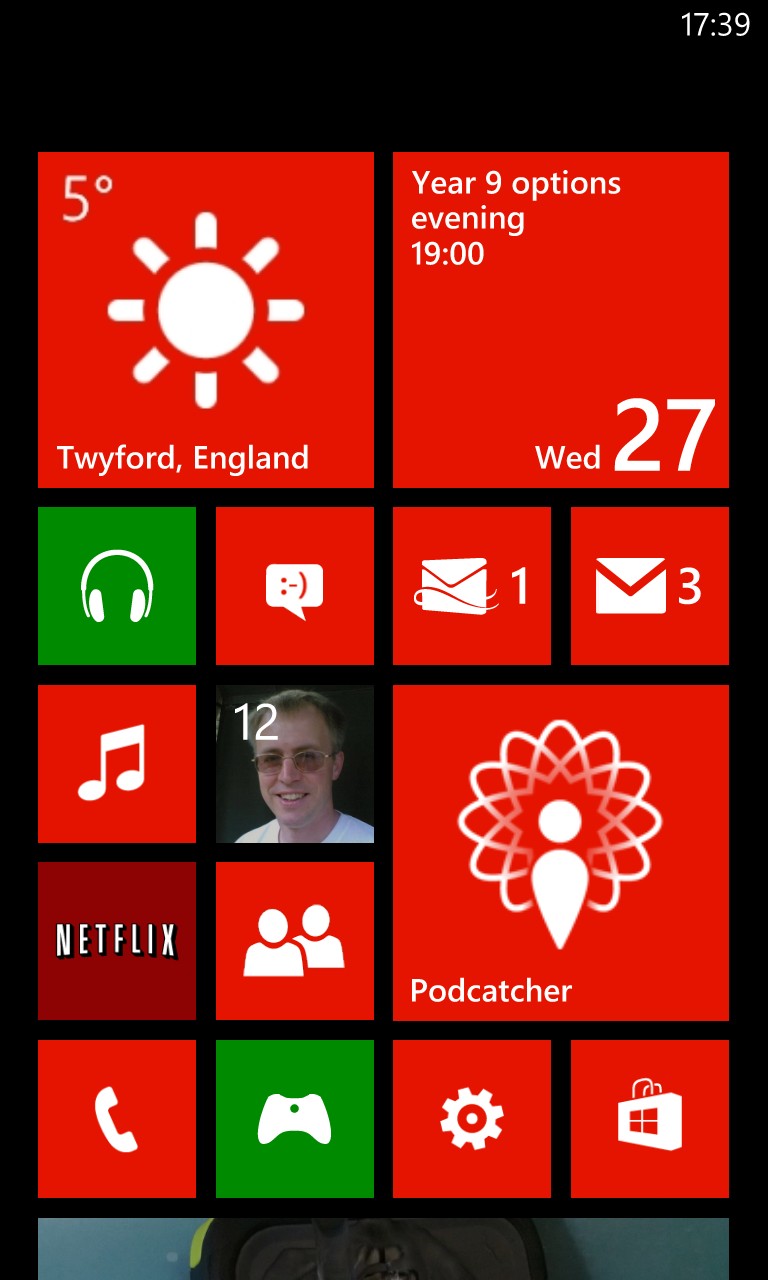
.jpg)
- "The Me tile is useless, it just tells me that someone has mentioned me and for every single instance I have to tap through to see what they said!" Answer: Solved. This behaviour changed last week with a Microsoft server upgrade, the 'notifications' pane now shows most of the text of each mention, inline (shown above), to save having to keep tapping through.
- "The volume keys still act for both multimedia and phone rings", so (for example) you either have to have your music and games at max volume or your phone rings at half volume. Or keep adjusting up and down all the time. Answer: Unresolved. Again, this is an obvious complaint, brought about by Microsoft's desire to simplify things for the user, since multiple volume controls (depending on the application/screen in use) were seen as confusing. I can see both sides of the argument and, again, a setting (e.g. "Independent media and telephony volumes") would be the way to handle this. Again though, don't hold your breath...
- "When playing music over headphones, you can’t adjust how it sounds without switching back to the Start screen and then heading into the depths of the System settings" ('audio' is the section you need, right at the bottom of the Settings list). Answer: Unresolved. Utterly trivial for Microsoft to fix, with a shortcut to the appropriate Settings dialog - let's hope it makes the cut for the platform update in the New Year.
- "General audio volume over the phone speaker isn't loud enough". Answer: Solved. Fixed in the new wave of Windows Phone devices - all the Windows Phone 8 units seem to have much more powerful audio output. The Lumia 920 (shown below), in particular, has the same excellent mono speaker as the Nokia 808 PureView, channelled here through two output ports:
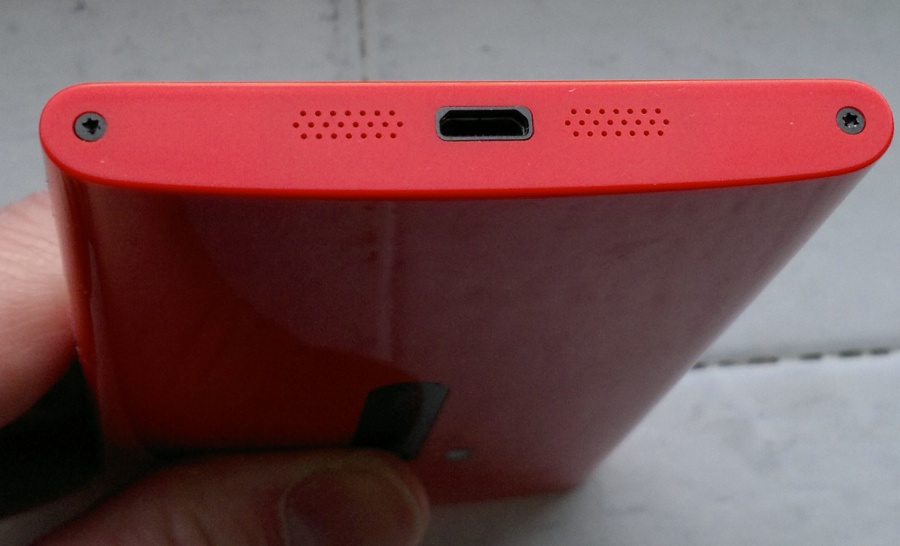
- "There's no FM transmitter". A complaint from many considering switching from Symbian, on which the feature was something of a staple (and very useful on car journeys). Answer: Partially solved. To be fair, FM transmission (also known as 'Play via Radio') is subject to interference from local stations and, with more and more cars now coming with Bluetooth audio built-in, and with more and more home equipment supporting DLNA, the need for an FM transmitter is gradually fading and, I suspect, may not ever appear on phones again.
- "There's no FM radio at all in Windows Phone 8 handsets". Answer: Unresolved. Most, if not all, the devices have the right hardware, but the relevant software component needs to be written into the platform. Microsoft and Nokia are probably looking at each other here... someone just port over the FM playing code from Windows Phone 7, ok?
- "It's a hassle sideloading media onto a Windows Phone". Answer: Solved. As of Windows Phone 8, the device appears as a regular disk under Windows 7 and 8, so media can be freely copied backwards and forwards. In fact, seeing as PIM sync and updates all happen over the air, there's little reason to ever use the official Windows Phone desktop software at all, unless you desperately want a hand-holding experience.
- "Mac isn't so well supported as Windows in terms of desktop integration". Answer: Solved. This wouldn't actually be too surprising, given that Apple's Mac platform is the arch rival of Microsoft's Windows. However, in the interests of widening the userbase for the phones, Microsoft has released 'Windows Phone' for Mac, previously called 'Windows Phone 7 Connector', with version 3.0 bringing much the same drag and drop and sync capability as the relevant Windows 7/8 software. In theory. Note that it does require OS X Lion or above - which lets out my Snow Leopard Mac, though I do have a Win7 laptop as well(!)
- "There's no memory expansion". Answer: Solved. Yes, there is now, at least on the majority of devices. The Nokia Lumia 820, shown below, the Lumia 720, 620 and 520, the Samsung Ativ S and HTC 8S all have official microSD expansion, for media use at least (you can't install apps on card).

- "There's no Spotify!" Answer: Solved. Spotify was released for Windows Phone in the last few weeks. Fully functional, apart from there not being any 'scrobbling', though do note that it's technically in beta.
- "There's no Instagram" (ah yes, an objection from the Android/iOS world!) Answer: Unresolved. You mean there's no way to mangle your photos and make them look like they were taken in 1940? Oh good. Ah, you wanted a real answer and not sarcasm? Instagram and (no doubt) a few other Web 2.0 services, is still waiting to be written, but I'd guess it will arrive in due course. I never want it within a mile of my phone, mind you....
- "There's no Whatsapp for Windows Phone 8". Answer: Solved. This was released just before Christmas:

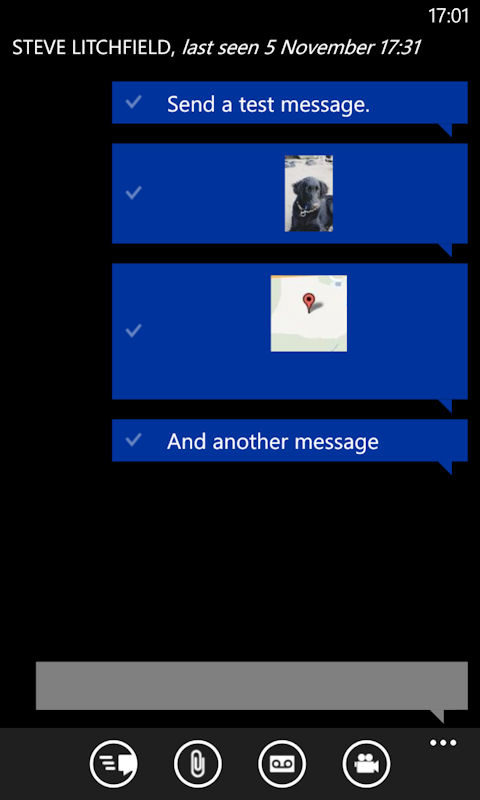
- "There's no Dropbox application". Answer: Solved. In theory, there's going to be an official client, but in the meantime, there are a dozen third party utilities, some of them free, all giving access, thanks to Dropbox's open API.
____________________________
Re-reading the above couple of thousand words, there's no easy summary here. What's one person's showstopper is another person's minor irritant or even irrelevance.
The three big ones for me personally were the wi-fi connection issue (now solved), the non-existence of a good podcasting solution (fixed by the new update to Podcatcher) and not being able to sideload video material (fixed in Windows Phone 8). Which means that, in theory, I'm sorted.
In addition, quite a few other annoyances for other people (especially with Symbian or Android expectations) have also now been addressed. What's left are a bunch of improvements to the core OS that really aren't that tricky to pull off if Microsoft really has the will and intent to roll its collective sleeves up during 2013.
I've tried to be honest at each stage of Windows Phone's development as to how 'ready' I thought the platform was. With my All About Symbian editor's hat on, when Nokia signed up with Microsoft, I was sceptical - and it's fair to say that there's still some of that feeling left even at the end of Feburary 2013.
What has to be acknowledged though is that, exactly two years after the infamous platform switch announcement, the platform has moved on significantly. We're now at the point where the general Symbian (or indeed Android) user could indeed switch to Windows Phone 8 and find most of what they wanted to do covered.
Of course, each platform has its unique strengths and, for example, those used to the full, no-holds-barred multitasking on Symbian, to the always on AMOLED clocks, to the higher spec cameras with Xenon flash (to name but three factors), will find moving to a Windows Phone 8 device still involves something of a downgrade, however much the latter platform also offers in terms of 2013 ecosystem and media goodness.
We live in interesting times. Operating systems rise and fall, each on a different trajectory and timescale, while manufacturers simply want to make a quick buck. And we, the users, have the hardest (but most fun) job of all, picking what's best for us.
Your comments welcome, but only if you too have been trying to live with Windows Phone 8 on a full time basis. How have you got on? Do you miss your old Symbian (or Android or iOS) device? Will you be sticking with Windows Phone through 2013?
